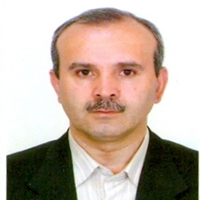Monitoring of Soil Respiration Changes in a Heavy Naphtha-Contaminated Sandy Loam Soil under Different Bioremediation Treatments
Petroleum contamination is treated by physical, chemical and biological approaches. The first two methods have limitations such as high costs, inefficacy and altering natural ecosystem. Today, biological treatment is a more interesting process to remove petroleum contamination. Bioremediation is a technique in which biological systems such as microorganisms are applied to destroy or transform (degrade) harmful chemicals. In recent years, employing hydrocarbon degrading bacteria to clean a petroleum contaminated soil has become a prevalent, efficient and economical technique that converts toxic wastes to non-toxic end products. This technique has reduced the harmful effects on health and ecology. Soil contamination with petroleum compounds such as heavy naphtha can threaten soil, environmental and human health. In bioremediation process, soil microorganisms use these hydrocarbons as a carbon source and, while making a microbial biomass, play a role in its decomposition and conversion to carbon dioxide. Bioremediation methods include biostimulation and bioaugmentation, which are promising methods for treating oil pollution. Application and comparison of various bioremediation methods such as biostimulation, bioaugmentation and integrated treatment was the main aim of this study to bio-remove heavy naphtha from contaminated soil. For this purpose, in a heavy naphtha-contaminated sandy loam, a variety of bioremediation treatments, including biostimulation (including supply of nitrogen-phosphorus elements, addition of manure and Tween 80 surfactant), bioaugmentation treatment (using a consortium of efficient bacteria) and integrated treatment (including all biostimulation and bioaugmentation treatments) were tested.
In this experiment, sandy loam soil was used. Heavy naphtha contamination was applied at a rate of 7% in soil samples and various bioremediation treatments were performed as mentioned above. This experiment was carried out in a pot scale (3 kg pots) based on split plot factorial design (pollution factor, bioremediation factor and time) with 3 replications, at room temperature for 120 days. During the experiment, the pots were aerated once a week and the soil moisture content was adjusted to 70-80% of the soil water holding capacity twice a week. For bioaugmentation of bacterial isolates, a consortium of Arthrobacter sp. COD2-3, Stenotrophomonas nitritireducens COD5-6، Stenotrophomonas asidamainiphila COD1-1 with a ratio of 5% V/W were used. In biostimulation treatment, cow manure with 5% W/W ratio was used. In NP treatment, which was related to the supply of nitrogen and phosphorus elements, N and P elements from sources of ammonium nitrate and potassium phosphate with a ratio of 20:5:1 (C: N: P) were used. Also, to use Tween 80 surfactant in the relevant treatments, a rate of 0.3% V/W was used. In the integrated treatment, all the mentioned treatments were used together to remediate oil contamination. On days 0, 5, 10, 15, 30, 45, 60, 90 and 120, samples were taken from each pot to measure the biological activity of basal respiration (BR) and substrarte-induced respiration (SIR).
The results showed that the bioremediation treatments reduced heavy naphtha contamination. Contamination also affected soil microbial activity, so that BR and SIR increased in all bioremediation treatments in the early days, but over time they decreased, due to the reduction of carbon source and also the reduction of soil nutrients. The amount of BR and SIR in the combined treatment changed from 0.67 to 0.53 and 3.30 to 2.73 (mg CO2 g-1 h-1), respectively. Also, the amount of petroleum compounds before and after bioremediation treatments showed that 81% of heavy naphtha was decomposed by the integrated treatment. Among the bioremediation treatments, the integrated treatment had a greater effect on the elimination of heavy naphtha contamination than the biostimulation and bioaugmentation treatments (p <0.01). The use of integrated methods not only increases the active population of microorganisms in the decomposition of petroleum compounds and provides optimal conditions for their activity, but also stimulates the native population of microorganisms and is convenient for removing petroleum compounds. It seems to be a good method.
According to the microbial respiration results in naphtha-contaminated soil, each treatment was able to reduce contamination on its own, while the integrated treatment was biostimulatory and bioenhancing treatment. However, in the integrated treatment, the efficiency of bioremediation process was higher, due to the simultaneous use of biostimulation and bioaugmentation treatments. The use of integrated treatment in places contaminated with petroleum compounds, including heavy naphtha, can help to biologically eliminate these contaminants.
- حق عضویت دریافتی صرف حمایت از نشریات عضو و نگهداری، تکمیل و توسعه مگیران میشود.
- پرداخت حق اشتراک و دانلود مقالات اجازه بازنشر آن در سایر رسانههای چاپی و دیجیتال را به کاربر نمیدهد.



